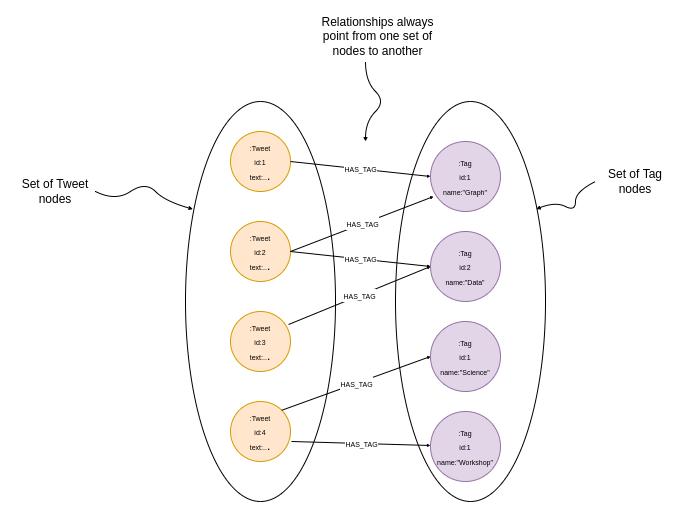This chapter covers
- Extracting hashtags from tweets with Cypher query language
- Calculating Jaccard similarity coefficient
- Constructing and analyzing monopartite networks using Jaccard similarity coefficient
- Using Label Propagation algorithm to evaluate community structure of a network
- Using PageRank to find the most important node within a community
In the previous chapter, you learned how to transform a custom graph pattern into direct relationships to use them as an input to graph algorithms like PageRank. In this chapter, you will focus on bipartite networks and how to project them into monopartite networks. First, a quick refresher of what a bipartite network is.
A bipartite network contains two sets or types of nodes. For example, Figure 7.1 visualizes the bipartite network of tweets on the left and their hashtags on the right. As you can observe, the relationships always points from one type of nodes to another. There are no direct connections between tweets or hashtags.
